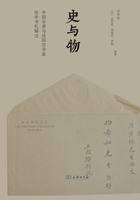
Preface
This correspondence for the first time brought together in this volume captures a pivotal episode in studies of the Chinese and Asian past, not simply because of the content of these letters, and the profound importance of the documents that came to light in the Mogao Cave in Dunhuang that stimulated them. The episode of their discovery was also pivotal in terms of changing world views, in both the East and West; of changing attitudes toward the discovery of a larger world and the uncertainty of our place within it. In the centuries that preceded, China and Europe had each experienced much greater certainties about their place at the heart of the world around them. This was conspicuously the case for the Chinese establishment, for whom the Opium Wars marked a particularly damaging episode for their cultural confidence, setting the stage for a submissive approach to ‘westernisation’ even during some periods sanctioned by the Qing Government itself. However, it was also the case in the West; there was a growing shift in European attitudes which were also becoming more reflective and self-critical.
Western scholars of the 19th century and earlier had often explored beyond the margins of their familiar communities, with a secure expectation that what they might find in these distant places would be a lesser, immature, or ill-formed version of themselves. Looking westwards, to the New World, or southwards, to Africa, they might discover the ‘primitive’ or the ‘wild’, indeed using their observations of those distant landscapes and their human occupants to clarify and refine what they meant by those terms. Looking eastwards to Asia, they saw stasis and stagnation, which stood in contrast to the unstoppable progress that was the triumphant hallmark of their own civilisation.
Even as the momentum of European imperial expansion and control sustained itself in the early 20th century, such cultural confidence had visibly been shaken and undermined, in response to the Great War. In Man Makes Himself, the Australian-born archaeologist Vere Gordon Childe captures a widespread sentiment by questioning confidence in ‘progress’ “if your lungs have been filled with mustard gas, or your son has just been blown to pieces with a shell ”. While the Great War brought a critique of the notion of European supremacy and inevitable progress emphatically to the fore, a clear shift in European perspective is evident in the decades immediately preceding. This can for example be seen in observations made in European visits to islands just north of Australia two decades before that momentous war. The group that travelled from Cambridge to the Torres Straits with Alfred Haddon in 1898 were by no means the first to venture into the ‘unknown’ and report back on the customs and lives of distant communities; that long-standing practice had greatly accelerated during the preceding century, and enriched the western narratives of the ladder progress to civilisation with glimpses of its lower rungs. What seemed so novel about the Torres Strait travellers was their interest is what was in the minds of the actual members of those distant communities, how they made sense of themselves, their world, its present and its past.
A combination of discovery, tension and uncertainty provides the context in which Paul Pelliot was entering into correspondence with Chinese scholars. Both sides were exploring new things, and doing so at a time of geopolitical tension, critical reflection and reassessment of cultural assumptions. It is a correspondence in which both sides had much to learn about themselves and the ‘other’. Pelliot had experienced first hand an most affirmative expression of the cultural ‘other’ during the Boxer Rebellion, when he was caught up in the siege of the foreign legations. He had also observed the more submissive approach of the Qing Government to the Westernisation movement in science and technology that followed the 2nd Opium War. At the time Pelliot found himself negotiating with the Boxer rebels, his home city of Paris was celebrating a century of Western achievements at the 1900 Exposition Universelle, but the fault-lines between imperious European nations that would lead to the Great War were gaining friction.
As in the new century each of those imperious nations would move steadily towards conflict, members of each of them would, during the century’s first decade, converge on Dunhuang, drawn by the growing excitement over the extraordinary manuscripts newly brought to light from the Mogao Cave. A British/Indian group would be led by Aurel Stein (himself originally from Austro-Hungary), from Russia, Sergei Oldenburg, from Japan, Omani Kozui, and from France, Paul Pelliot himself. Pelliot’s correspondence arises from that convergence, and from a time before scholarly exchange between those nations would be geopolitically constrained, as would be the case for a significant part of the 20th century. The legacy of that episode of convergence has been widespread and profound, in history, archaeology and sinology around the world.
This novel symmetry of engagement underlies the legacy of these letters. While previous generations of westerners may have observed other societies, or listened to informants, Pelliot was engaging with scholars, moreover scholars who played a key role in teaching and influencing subsequent generations who have built an international scholarly discourse in China as in the West.
While 19th century European scholars looked to continents to their East and West, to discover wild, primitive and stagnated counterparts to themselves, 21st century Chinese historians and archaeologists now also look to the continents to their east and their west, but in quite a different way. They look to their colleagues in America and Europe in a shared discourse of global research and enquiry, in which they occupy an ascendant and increasingly prominent role in global research. The cusp of those two contrasting modes of intercontinental scholarly engagements is captured in the remarkable correspondence, stimulated by the chance discovery of a series of much earlier texts linking East and West, and now assembled in this volume.
Prof. Martin Jones
April 2015